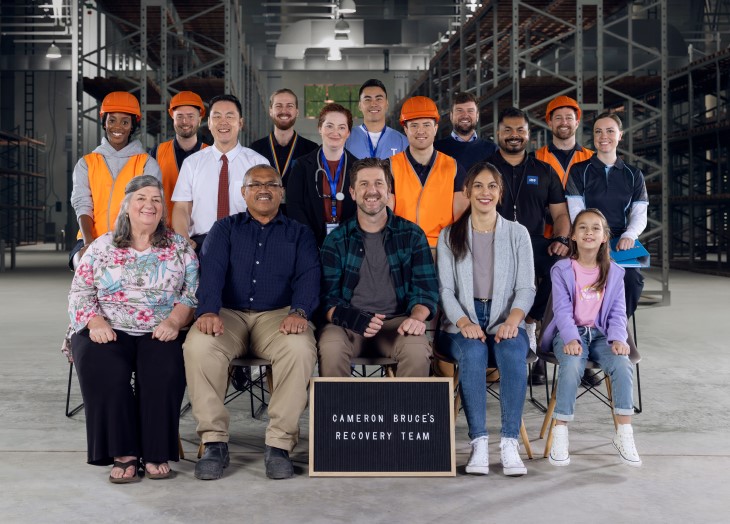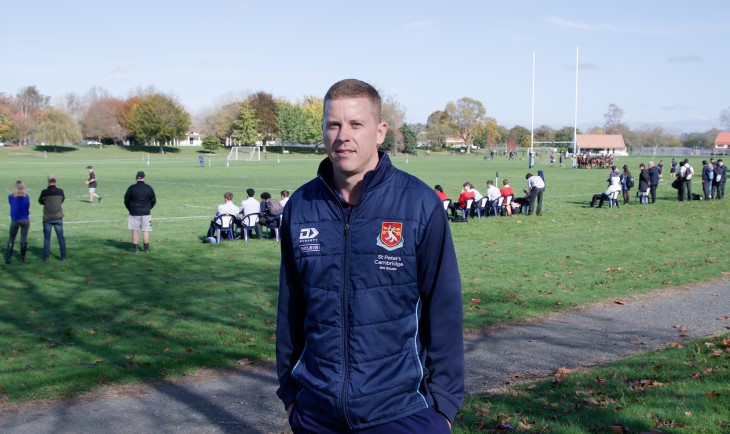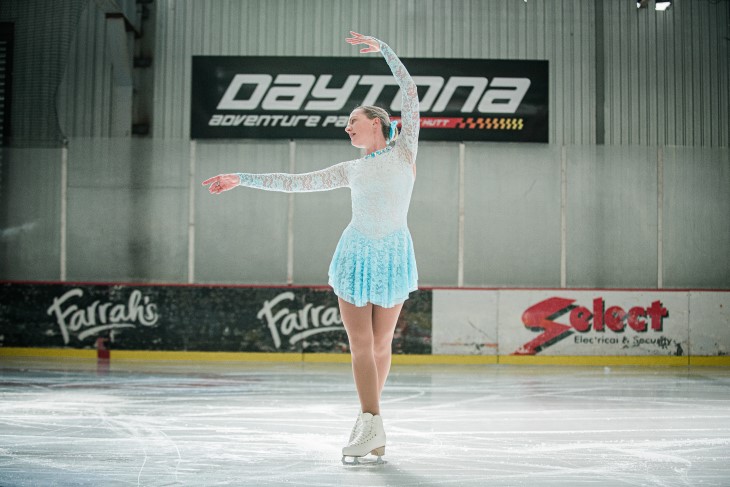Mayu’s story: Ballet dancer back to best after serious injury
Video transcript for Mayu Tanigaito
Audio: gentle music
Visual: Mayu Tanigaito, a ballet dancer wearing dark blue trackpants and t-shirt, puts on a pair of pointe shoes
Transcript: VOICE OF MAYU TANIGAITO
It was great to be able to recover at work while I was doing my rehab.
Visual: Mayu stretches in the studio whilst talking to two fellow Royal New Zealand dancers who are sitting on the floor
Audio: Connecting with work means connecting with those people.
You know, you feel like you're living your life still.
Visual: Mayu performs five pirouette turns then stretches her arms out to finish
Kia ora. My name is Mayu Tanigaito.
Visual: Mayu sits on a chair in the main studio of the Royal New Zealand Ballet, with large mirrors behind her
Audio: I'm Principal Dancer with the Royal New Zealand Ballet.
This is my 12th year with the company.
Visual: Mayu leaps across a sunlit studio wearing a white, classical tutu, with other similarly dressed female dancers in the background
Audio: I was trying to do this one big jump and taking off I felt like all the sudden, like a weird feeling in my knee.
Visual: Mayu performs on stage in the lead roles of Romeo and Juliet, and Giselle
Audio: That injury kind of reminded me how special to be on stage in front of the audience and sharing the feeling with the audience. I was trying to come back to dancing, but my body telling me stop dancing because it's just not right.
Visual: A lower leg shot of Mayu pointing and stretching her feet
TEXT ON SCREEN:
Mayu went on a Recovery at Work programme involving ACC, the RNZB and health providers, which allows people to do alternative duties while they recover from injury.
Visual: Mayu speaks to camera
Audio I went to our Royal New Zealand Ballet physio.
Visual: a diagram of a knee joint showing the anterior cruciate ligament
Audio I went to take MRI and then, you know, you can really clearly see ACL is gone.
Visual: Mayu speaks to camera
Audio ACL recovery has like a strict protocol to follow. So first six months, I'm not allowed to start dancing at all.
Because of my age too like I decided to take a little bit longer time.
Visual: Mayu working on her strength and flexibility in the studio
Audio: So, like, ACC gave me help to get into gyrotonics and Pilates. Try to get strength back, try to get flexibility back for that first six months.
Visual: Mayu looks out the large window of the studio
Audio So even though I'm not able to dance, company gave me to do some work.
Visual: Photos of Mayu with young dancers and doing exercises with residents of a retirement village
Audio For example, like a Ryman Healthcare visit. They were making a new programme for the older people to start moving their body and stuff like that. Yeah, that was really fun actually.
Visual: A man stands on the main studio of the Royal New Zealand Ballet and addresses the camera
VOICE OF DAVID MCALLISTER, ACTING ARTISTIC DIRECTOR, RNZB:
Audio: I think the most important thing for when you have a long term injury with the dancer in the company is you want to keep them involved in the organisation and also support them because it's not just a physical thing that they're dealing with.
It's a very emotional thing.
Visual: Mayu performing on a black and white contemporary ballet film
Audio: And, you know, one day you're jumping around with the rest of the company and the next day, you know, you could be by yourself in a gym doing squats or something like leg press.
So it's really important to maintain that relationship with the dancer
Visual: David speaks to camera
Audio: and for them to feel like the company hasn't moved on without them, that they are really still an integral part of the organisation.
Visual: Mayu performs ballet barre exercises in the studio
TEXT ON SCREEN:
Research shows that recovering at work can be good for a person's physical and mental wellbeing.
ACC can provide a rehabilitation programme, financial support, equipment and transport.
Visual: Mayu in studio tying her pointe shoes, stretches her feet and legs and talks to fellow dancers.
VOICE OF MAYU TANIGAITO
Audio: It was great to come to the company to start rehabbing soon as possible so that I can keep my routine, so I can have motivation. I can have like mentally: 'Yes, I want to come back dancing.' Yeah, everyone was like "Oh, I'm so excited for you to come back.” They're like giving me so much positive energy.
Visual: Mayu speaks to camera
Audio: So I definitely needed that. If I had to stay at home, have to do rehab by myself that's too difficult.
Visual: Dancers in over-the-top wigs and make up clink champagne glasses as Mayu rushes past them and hits one with a balloon.
Audio: Before, I never thought about it, but like now I'm like, this might be my last (time on) stage.
Visual: Mayu dancing various roles on stage
Audio: So, like, I'm just going to enjoy it and try to put everything out there to share with the audience and just really enjoy that moment.
Visual: Mayu speaks to camera
Audio: Yeah, that's probably one thing that's changed.
WHITE TEXT ON BLUE SCREEN:
Recovery at Work takes a team effort – from the injured person, their employer, and their health provider, as well as their whānau and workmates. Learn more about what role you can play in recovery at work at acc.co.nz
Teamwork makes recovery work
With special thanks to the RNZB
ACC and RNZB logos
After suffering a ruptured Anterior Cruciate Ligament (ACL), Mayu Tanigaito's career as one of New Zealand's leading ballet dancers was in limbo. But with the support of the Royal New Zealand Ballet and ACC, she was able to get back to her best.
Valentine’s Day 2020 wasn’t exactly the romantic occasion that Mayu might have hoped for.
Just one month into her 10th year at the Royal New Zealand Ballet (RNZB), she faced a career-threatening injury while rehearsing for the first major performance of the season.
“I was trying to do this one big jump and, taking off, I felt a weird feeling in my knee,” Mayu says.
She fell to the floor and, while there was no significant pain, she knew something wasn’t right. An MRI scan confirmed Mayu had torn her ACL, and so began an 18-month journey to re-learn everything, from basic walking right up to elite-level ballet skills.
Appreciating her career
Mayu rose to top of the dance industry with her artistic and physical prowess. Her career is the longest of any professional ballet dancer currently working in New Zealand, having joined the RNZB 12 years ago.
She’s performed to countless thousands of audience members over that time, both at home and on international tours to China, the United States and Europe.
Like any high-performance sport, ballet comes with a gruelling training schedule and the expectations of perfection, from the dancers themselves, as well as from work colleagues and fans.
Careers are notoriously short, and this injury reminded Mayu how much she loves her artform.
“The injury reminded me of how special it is to be on stage in front of the audience and sharing a feeling with the audience,” she says.
“I never thought about it before, but now I'm like, this might be my last time on stage, I'm just going to put everything out there to share with the audience, and just really enjoy that moment.”
Mayu is not alone. We've accepted around 42,000 claims for dance-related injuries over the past five years. These injuries came at a cost of $40 million to help people recover.
RNZB Serenade featuring Mayu Tanigaito and Kihiro Kusukami (Photo: Stephen A'Court)
Recovery at Work plays key role
Mayu’s surgery was a success and, with the RNZB’s physio team keeping a close eye on her, she diligently began her recovery.
ACC helped with the costs of surgery and physio as well as providing financial support in the recovery period, while Mayu was unable to dance.
“ACL recovery has a strict protocol to follow. So for the first six months, I was not allowed to start dancing at all,” she says.
Mayu visited the company most days, doing the bulk of her rehabilitation in the ballet studios and pilates room, while the RNZB made sure she felt very welcome.
“I think the most important thing is to keep any injured dancer involved in the organisation,” says acting RNZB Artistic Director David McAllister AC.
“It's also about supporting them because it's not just a physical thing they're dealing with. It's a very emotional thing.”
Mayu was very appreciative of that support.
“They really encouraged me to come back, and to have patience, that was great," she says.
"They gave me so much positive energy. They were like, just take your time, and any time I needed to talk to someone, there was always someone there.
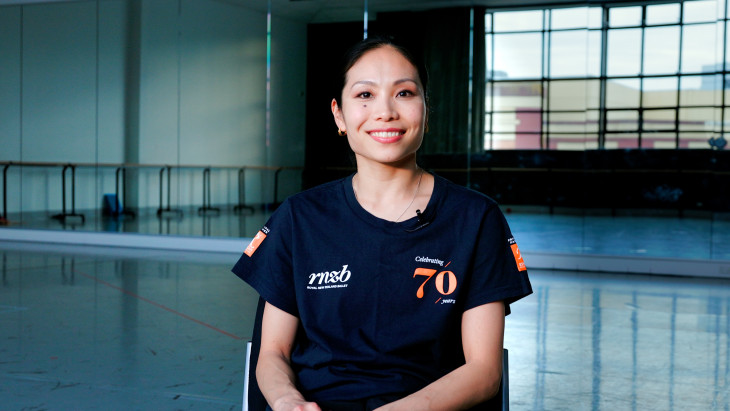
“Connecting with work means connecting with people. Even not talking about your injury, just casual chatter with people, having coffee with them. Those things help get you motivated and you feel like you're still living your life.”
David knows the feeling all too well, having recovered from several injuries himself, including ACL surgery, over his illustrious two-decade career as a Principal Dancer at The Australian Ballet and guest artist at many international companies including the Bolshoi.
“It's really important to maintain that relationship with the dancer and for them to feel like the company hasn't moved on without them - that they are still an integral part of the organisation,” he says.
Finding other roles while rehabilitating
The company organised alternative work duties for Mayu, including visits to Ryman Healthcare Villages where she taught movement programmes to the elderly residents, and to work with young dancers in the RNZB’s mentor programme.
“That was really fun,” she says.
“I got to speak in front of those younger students and they really wanted to know what a dancer's life is like.”
After six months of enforced rest, Mayu slowly began her ballet rehab, all the way from the movements she learnt as a child, to the highly advanced professional techniques she has mastered over her lifetime.
“I had to start with first position, second position. Just bend your knees and point your foot. It was a very slow process, but I learned so much about my body and about my habits, then reteaching my body how to dance. That was actually quite a cool experience.”
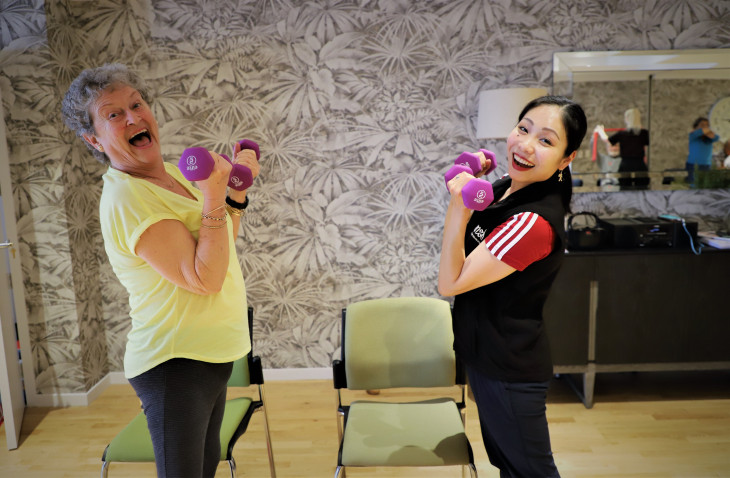
Mayu leading a movement class at William Saunders Ryman Village.
A change in mindset
Mayu is now back on stage and going strong, having recently danced the lead role in Romeo and Juliet on the RNZB’s nationwide tour.
She's always been careful to look after herself but no longer takes any chances with her health.
“It’s changed my body," she says.
"I take more time to warm up. Even if I’ve just returned from a lunch break, I have to have a proper warm up. More than anything, I listen to my body in the morning.
"I think to myself, how am I feeling today? Might I be able to push today, or should I step back a little bit?"
The benefits of recovering at work
Mayu’s experience is in keeping with what we know about the importance of recovering at work.
Research shows it can be good for an injured person’s physical and mental wellbeing, and can help them get better, sooner.
It provides structure and routine, a sense of purpose, and social connection to workmates – which all contribute to a better recovery.
But it takes a real team effort – from the injured person, their employer and their health provider, as well as whānau and workmates.
Recovery at Work online resources
We're here to help make Recovery at Work easier and have created a range of helpful online resources to make Recovery at Work a success for you.
Learn more about what role you can play in Recovery at Work – whether you're an injured worker, an employer or a health provider – at our new online hub.
